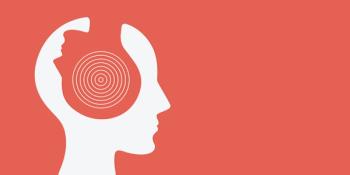
- Vol 32 No 2
- Volume 32
- Issue 2
Beyond Addiction
The authors of this book leave readers feeling empowered, knowing that they can be an important driver of change. It also reminds psychiatrists about some core components of the patient experience.
New York: Scribner; 2014
336 pages • $26 (hardcover)
BOOK REVIEW
Reviewed by Christopher Aloezos, MD
“This book is different.” These are the opening words to
The book is broken into an introduction followed by 4 main sections. The introduction outlines the purpose of the book and how it is to be used. “Jump around as needed,” the authors encourage the reader. The authors are informed by CRAFT (Community Reinforcement and Family Training), which is described in depth and referred back to several times throughout the book. As such, the authors shift the light from its usual focus on the substance or addictive behavior to the broader context in which an addiction exists. By doing so, they work successfully to lessen stigma and create space for everyone to change, not just the person with an addiction.
In part one, “What to Know,” the authors devote several chapters to inform the reader about the various definitions and meanings of addiction, motivation, and change. The psychiatrist reader is reminded in this section of something often forgotten: people use substances because they get something out of it. The reason for using can change from day to day, and from substance to substance. Without appreciating this, we miss the reasons our patients use and ultimately may miss an opportunity to
In part two, “How to Cope,” the authors teach the reader 3 invaluable skills not only to help a loved but also to help themselves as people suffering alongside someone with addiction: awareness, coping, and tolerating (ACT). These skills are the focus of this part of the book, and rightfully so. To highlight the importance of ACT, a happiness scale is introduced, which is a 1-10 scale incorporating multiple facets of life. The authors encourage the reader to reassess his or her happiness using this scale from time to time, especially when times are hard. Also, used with notable effectiveness here is a “what’s-hard-about-this” box that offers a blurb acknowledg-ing the inherent difficulties in what the authors are asking of the reader. These boxes have the effect of bolstering the alliance between the authors and the reader by sending the reader the unspoken message: we know how hard this can be.
Part three, “How to Help,” is the largest section of the book and includes the most information for the reader. Goal setting, communication, reinforcement, and consequences are emphasized as a means to drive change. More concretely, this part also includes treatment options available to people struggling with addiction-from pharmacological options to the various psychotherapy modalities. For psychiatrists who provide many of the treatment options outlined, the authors provide accurate and easily understood explanations. They are also right to highlight that people often seek the first-and most restrictive-option because it feels the safest. Accordingly, the authors’ point to the clinician and the power a good initial assessment can have in providing the appropriate level of care.
Part four, “Living Your Life,” includes only 1 chapter. This chapter, “Self Care 2,” reviews many of the ideas brought forward earlier in the volume. The authors leave the reader feeling empowered, knowing that they the reader, the loved one of someone suffering with an addiction, is deserving of attention and can be an important driver of change. And in this way, this book is different.
Disclosures:
Dr Aloezos is a Second-Year Resident in the department of psychiatry and behavioral sciences at the Montefiore Medical Center, Albert Einstein College of Medicine, in the Bronx, NY.
Articles in this issue
almost 11 years ago
Introduction: Neuropsychiatry Is Thrivingalmost 11 years ago
Management of Mild Traumatic Brain Injuryalmost 11 years ago
Update on Psychogenic Nonepileptic Seizuresalmost 11 years ago
Transcranial Magnetic Stimulation in Neuropsychiatry: An Updatealmost 11 years ago
The Neural Basis of Bipolar Disorderalmost 11 years ago
Transparent Notes in Psychiatryalmost 11 years ago
Shadows on a Wall: Phenomenology in an Acute Care Settingalmost 11 years ago
Unanswered Questionsalmost 11 years ago
The Interface of Dermatology and Psychiatryalmost 11 years ago
A Practical Update on Neuroimaging for Psychiatric DisordersNewsletter
Receive trusted psychiatric news, expert analysis, and clinical insights — subscribe today to support your practice and your patients.














